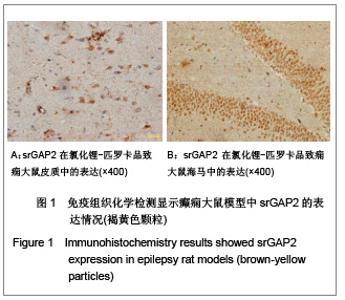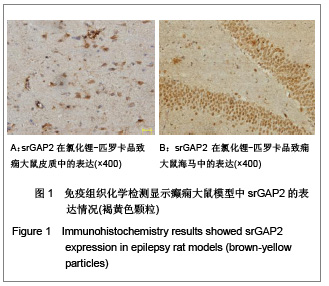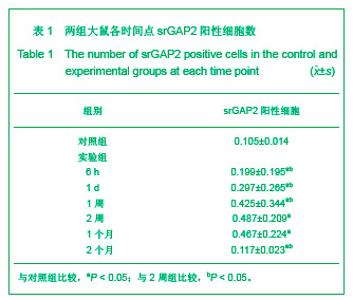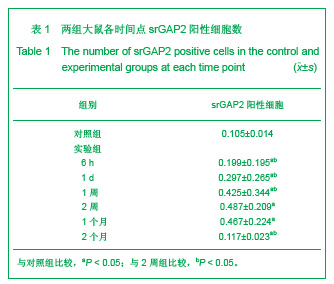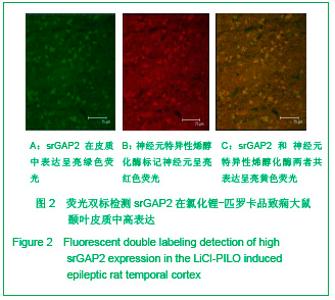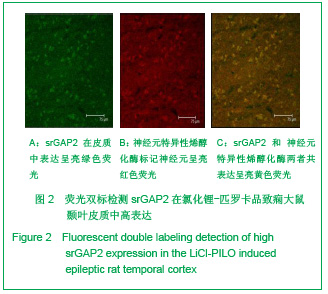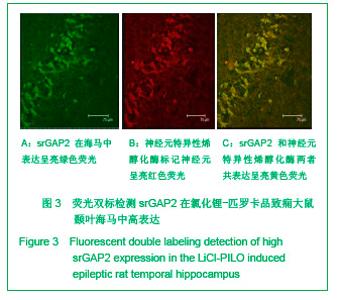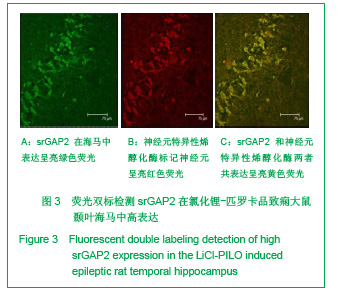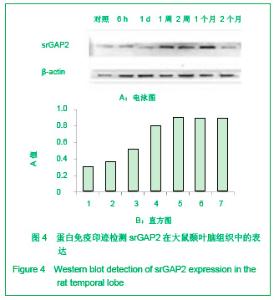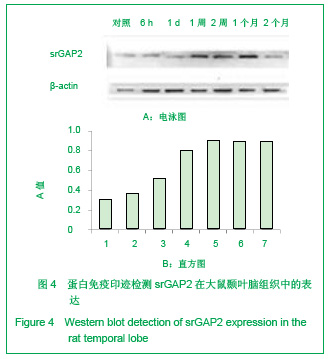| [1] Ribak CE, Seress L, Weber P, et al. Alumina gel injections into the temporal lobe of rhesus monkeys cause complex partial seizures and morphological changes found in human temporal lobe epilepsy. J Comp Neurol. 1998;401(2): 266-290.[2] Nadler JV, Okazaki MM, Gruenthal M, et al. Kainic acid seizures and neuronal cell death: insights from studies of selective lesions and Drugs. Adv Exp Med Biol. 1986;203: 673-686.[3] Post RM, Weiss SR. Convergences in course of illness and treatments of the epilepsies and recurrent affective disorders. Clin EEG Neurosci.2004;35(1):14-24.[4] Zhu SQ, Yang JJ,Du J,et al.Zhongguo Kangfu.2004;19(1): 6-8 朱遂强, 杨嘉君,杜鹃, 等.戊四氮点燃过程中大鼠海马纤维发芽变化的研究[J]. 中国康复,2004,19(1):6-8.[5] Lynch M, Sutula T. Recurrent excitatory connectivity in the dentate gyrus of kindled and kainic acid-treated rats. J Neurophysiol. 2000;83(2): 693-704.[6] Soderling SH,Guire ES ,Kaech S, et al. A WAVE-1 and WRP signaling complex regulates spine density,synaptic plasticity,and memory. J Neurosci.2007; 27(2):355-365.[7] Racine RJ.Modification of seizure activity by electrical stimulation Ⅱ.Motor seizure .Eletroencephalogr Clin Neurophysiol. 1972;32(3):281-294.[8] Sabrice Guerrier,Jaeda Coutinho-Budd,Takayuki Sassa.ETAL. The F-BAR domain of srGAP2 induces membrane protrusions required for neuronal migration and morphogenesis.Cell. 2009;138(5): 990-1004. [9] Saitsu H, Osaka H, Sugiyama S, et al. Early infantile epileptic encephalopathy associated with the disrupted gene encoding Slit-Robo Rho GTPase activating protein 2 (SRGAP2). American Journal of Medical Genetics Part.2011;158A(1): 199-205. [10] Ayala R, Shu T, Tsai LH. Trekking across the brain: the journey of neuronal migration. Cell.2007;128:29-43. [11] Bacon C, Endris V, Rappold G.Dynamic expression of the Slit-Robo GTPase activating protein genes during development of the murine nervous system. J Comp Neurol. 2009;513:224-236. [12] Frost A, Perera R, Roux A, et al. Structural basis of membrane invagination by F-BAR domains. Cell.2008;132: 807-817.[13] Frost A,Unger VM,De Camilli P.The BAR domain superfamily: membrane-molding macromolecules.Cell.2009;137:191-196. [14] Saarikangas J, Zhao H, Pykalainen A, et al. Molecular mechanisms of membrane deformation by I-BAR domain proteins. Curr Biol.2009;19:95-107. [15] Scita G, Confalonieri S, Lappalainen P, et al.IRSp53: crossing the road of membrane and actin dynamics in the formation of membrane protrusions. Trends Cell Biol.2008;18:52-60. [16] Yao Q, Jin WL, Wang Y,et al.Regulated shuttling of Slit-Robo-GTPase activating proteins between nucleus and cytoplasm during brain development.Cell Mol Neurobiol 2008; 28:205-221. |
